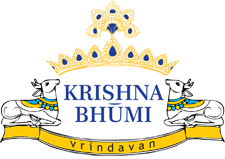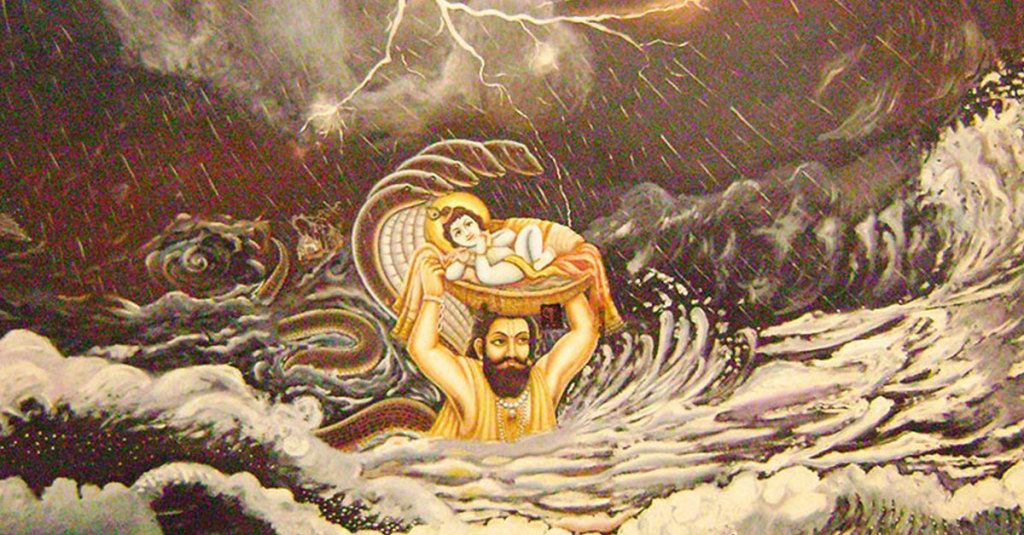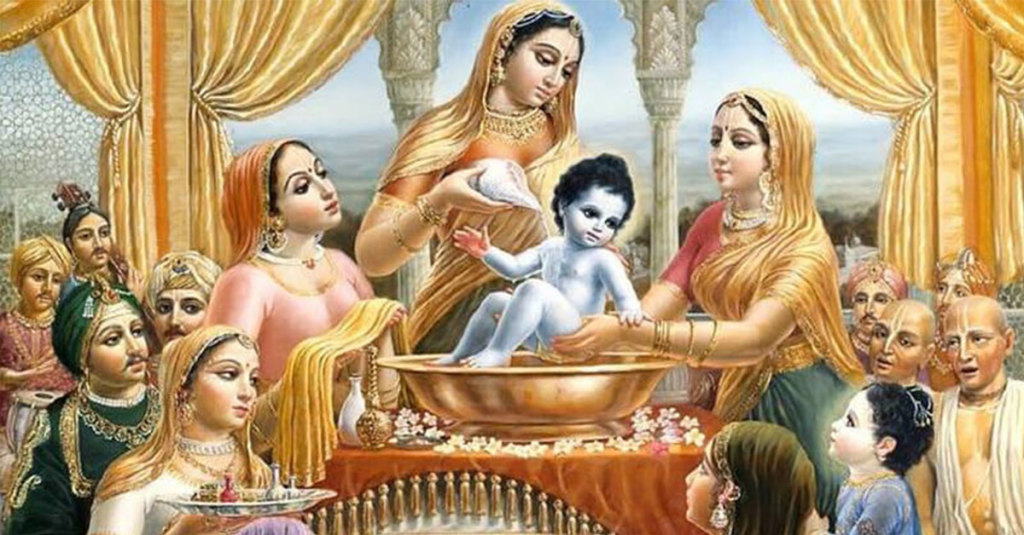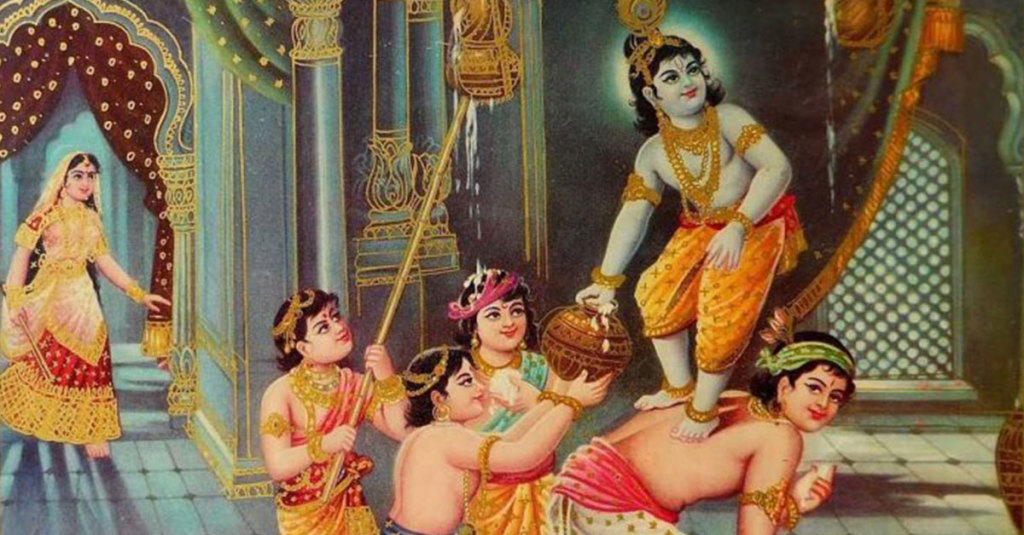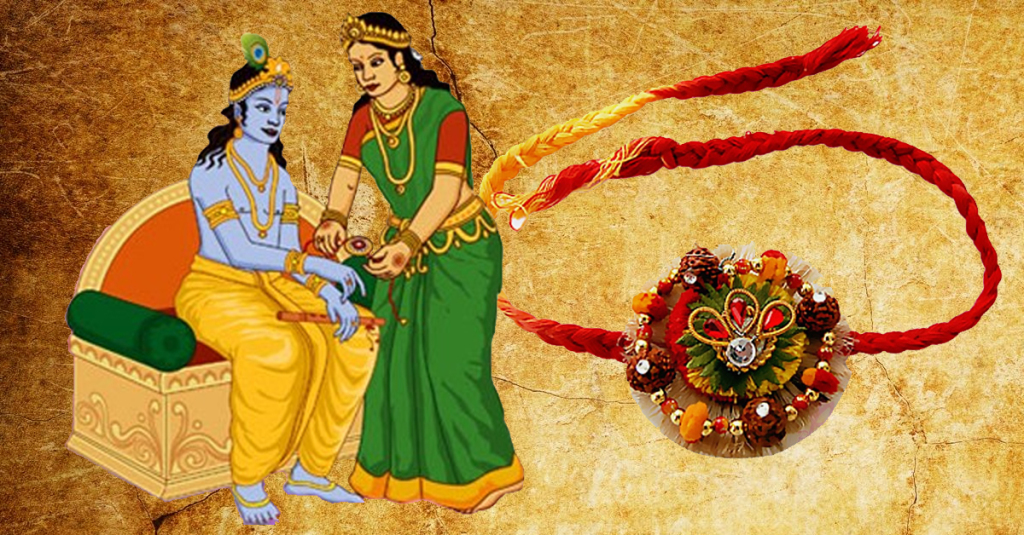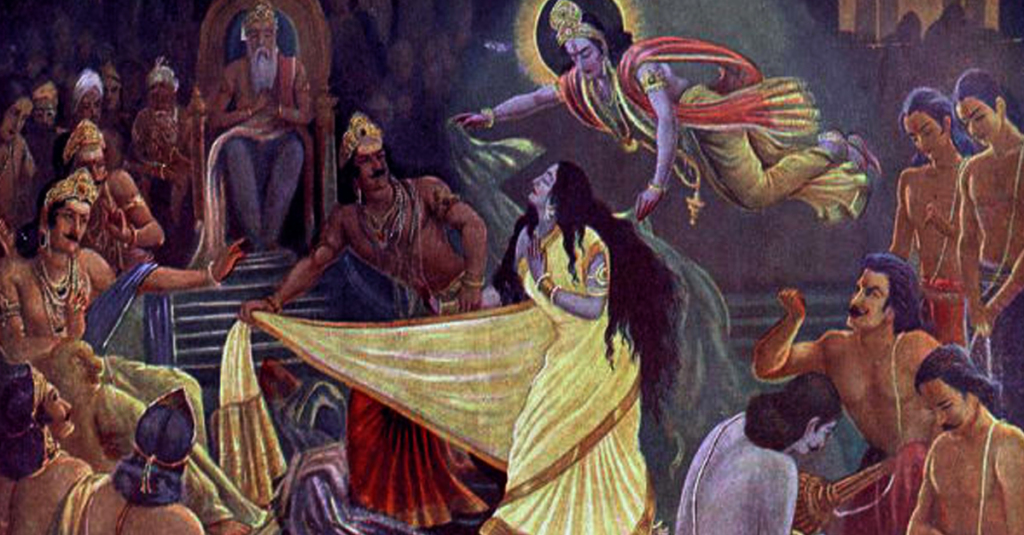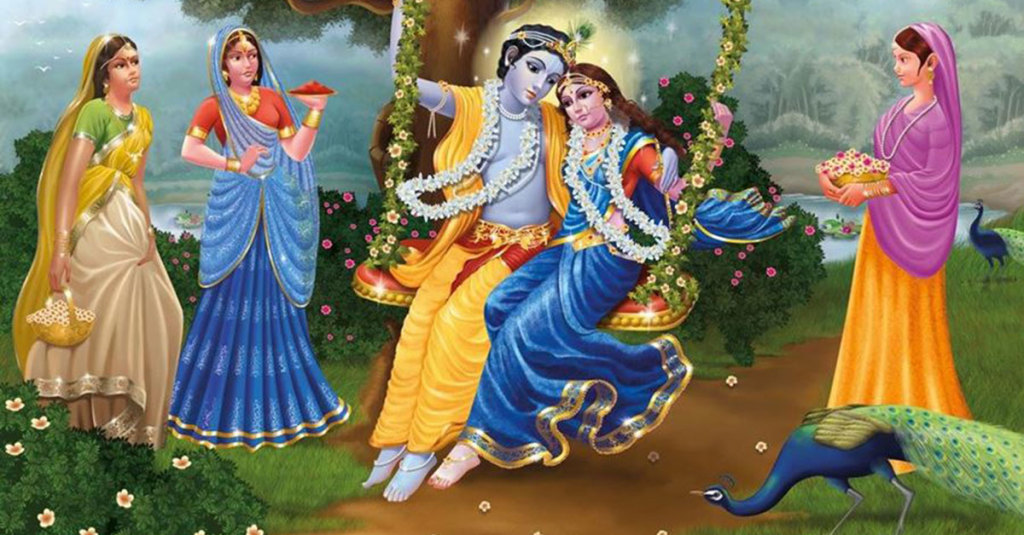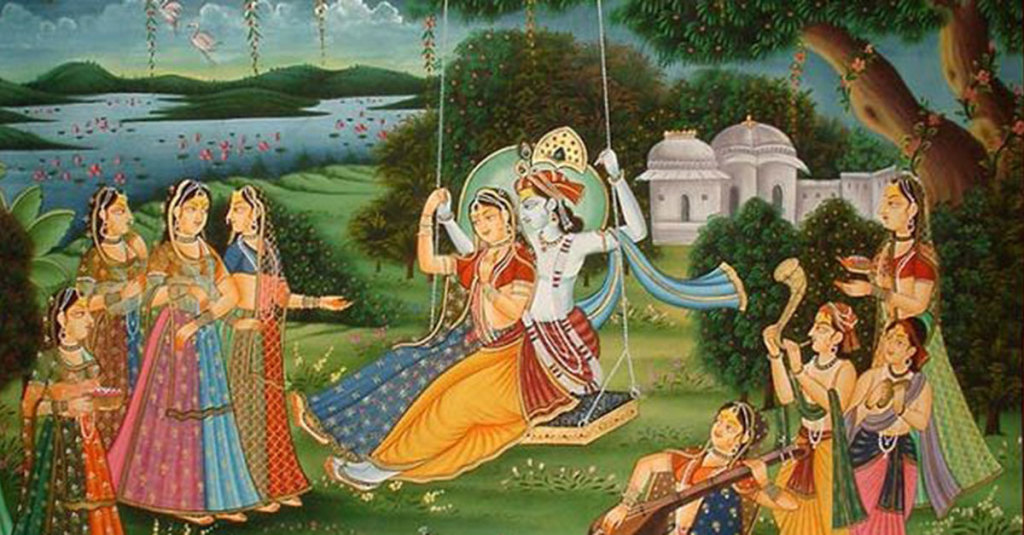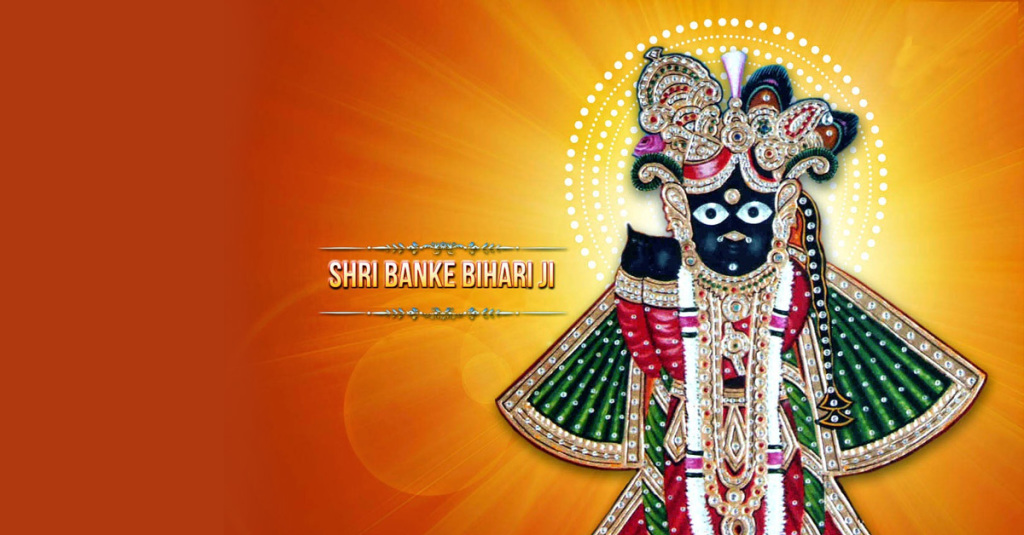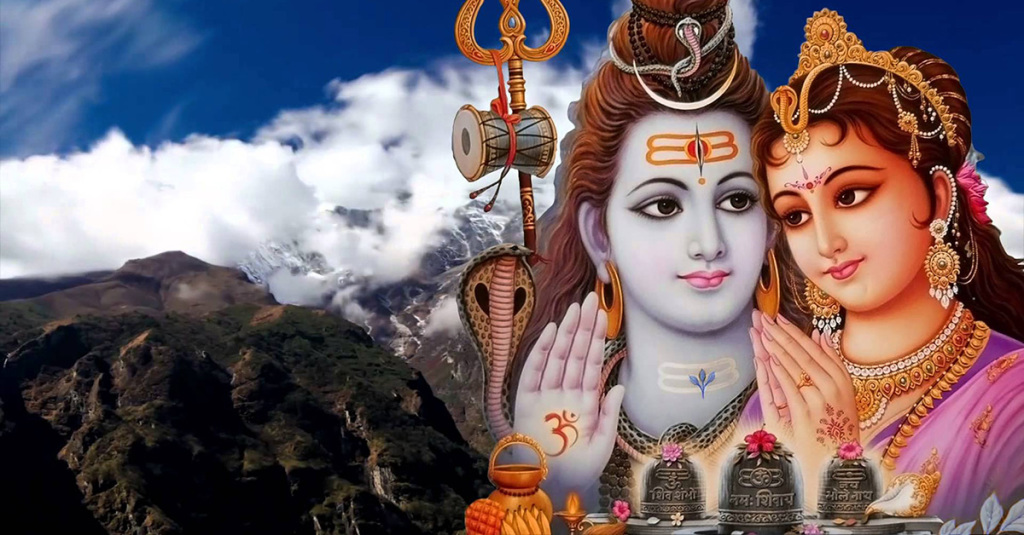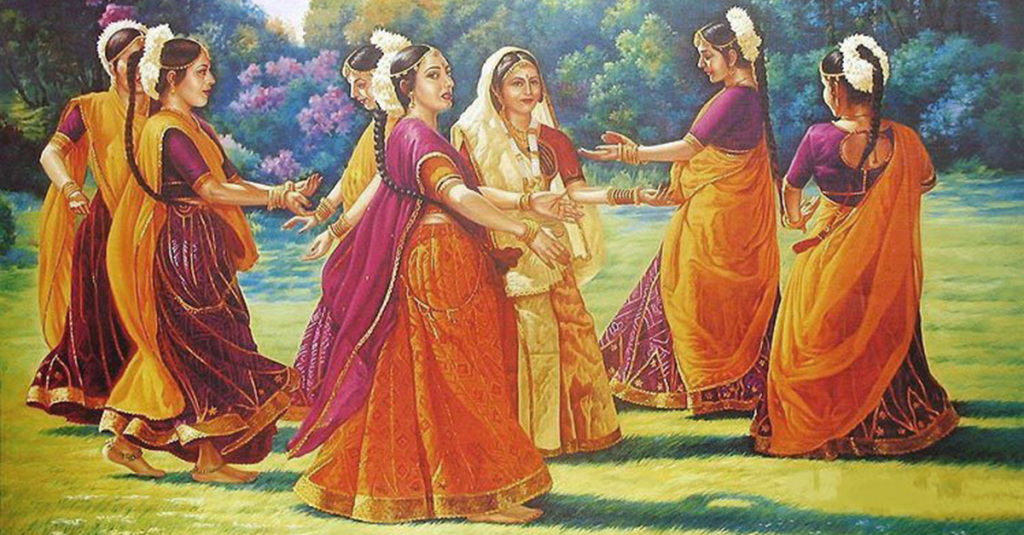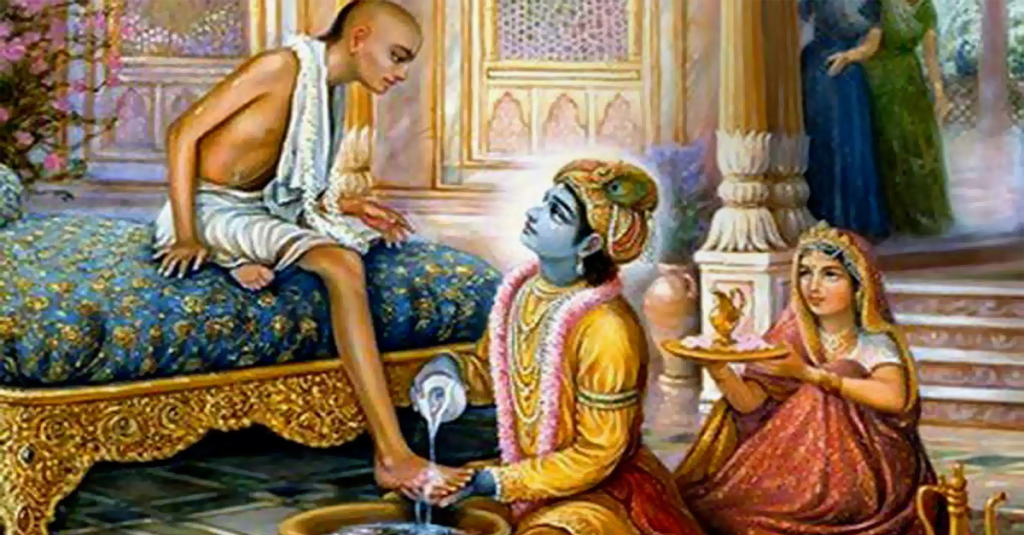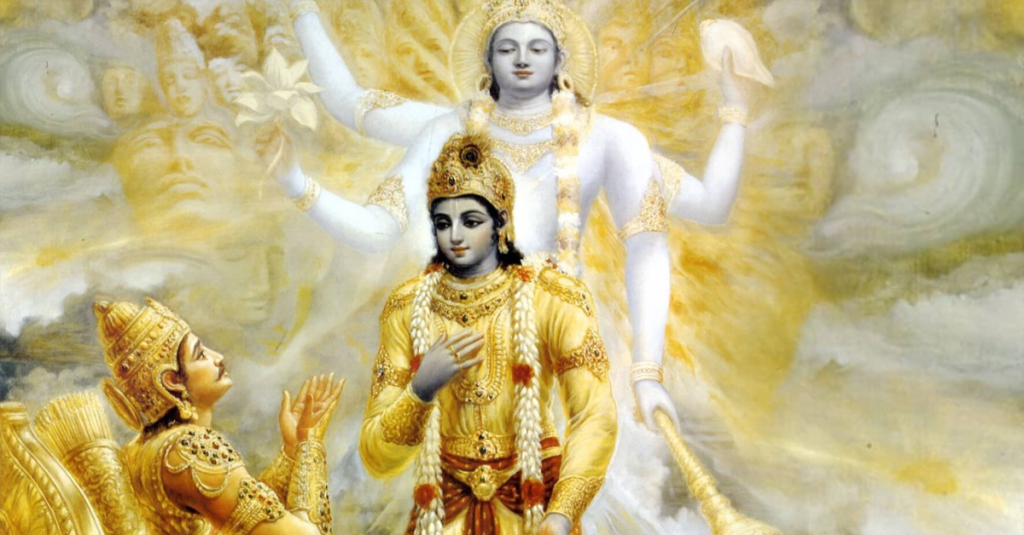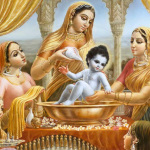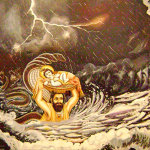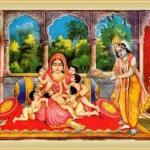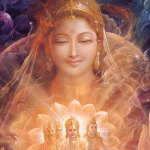JANMASHTAMI: THE CELEBRATION OF KRISHNA’S BIRTH
Janmashtami celebrates the birth of Lord Krishna, who is mentioned in the Hindu religious scriptures as God Almighty. To Krishna bhakts, it is a day of deep spiritual regeneration, commemoration, and observance. Krishna is the most mischievous and affectionate son, the most sympathetic friend, and the most passionate lover. And on Janmashtami, all devotees celebrate the Lord’s birth for these special qualities.
Krishna Janmashtami also called Shri Krishna Jayanti, Gokulashtami and Ashtami Rohini is observed on the eight day of Krishna Paksha in the month of Bhadrapada. Since Devakinandan was born at the stroke of midnight, the festival is observed for two days. The first day is known as Krishnashtami and the next day is called Kalashtami. The celebrations in Vrindavan are popular, brilliant, and vivid. Read about the story of Krishna’s birth, the significance of Janmashtami, and how this festival is celebrated in the holy Braj.
Why Krishna’s Birth is a Miracle
The circumstances related to Krishna’s birth are extraordinary and miraculous. Kansa, the king of Mathura and maternal uncle of Shyamsundar was a tyrant and evil ruler. During the wedding ceremony of Devaki (Kansa’s sister) and Vasudeva, a divine foretelling claimed that the couple’s eighth son would spell death for Kansa. Hearing the divine prophecy, Kansa put both Devaki and his brother-in-law behind bars, tying them with chains and locks. Kansa decided to kill Devaki, but when Vasudeva promised that he would give up all the babies to Kansa as soon as they were born that the cruel king was somewhat appeased. Kansa killed all the six children of Devaki and Vasudeva. However, Balaram, the couple’s seventh child was saved because of divine intervention, when Balaram was moved from the womb of Devaki to that of Vasudeva’s other wife, Rohini.
When Devaki conceived Krishna, the eighth child, the surroundings were suffused with majestic beauty and benignity. And when Gopal was just to be born, the prison guards fell into a deep sleep as a result of which they could not witness the birth of Devakinandan. It was indeed a miracle with all the sentinels falling asleep and the chains, iron shackles, locks, and prison gates miraculously unlocking.
The Manifestation of Krishna as Vishnu
Gopal was born in the form of Lord Vishnu, dressed in beautiful jewels and silk, and carrying the sudarshan chakra, shankha, lotus, and club. Seeing this, Devaki and Vasudeva prayed so that Krishna looked like an ordinary baby and they could hide Him from Kansa. Hearing this, a divine voice advised Vasudeva to move Krishna to Gokul across the river in a basket and exchange Devakinandan with the newborn girl child born to Nanda and Yashoda.
The Stormy Night When Krishna Was Moved
On a dark and stormy night when the entire city was asleep and the Yamuna was in spate with the waters raging, Vasudeva moved out of the prison. He carried infant Krishna in a basket braving the turbulent river. The rain poured in torrents, but the water parted because of the storm, allowing Vasudeva to pass and transport Devakinandan safely to Gokul. Vasudeva held baby Krishna high over his head when crossing the Yamuna. Magically, a five-mouthed snake followed Vasudeva and covered infant Krishna from above with its hood to protect Him from the rain. Reaching Nanda’s house in Gokul, Vasudeva found its gates open, exchanged the babies as advised and returned to Kansa’s prison with Nanda’s and Yashoda’s baby girl. Thus, Krishna was left behind to be raised by His foster parents in Gokul.
Gokul Rejoiced the Birth of Krishna
With the break of dawn, when Nanda’s and Yashoda’s beautiful son, dark as a night and charismatic as the sun, was discovered, the people of Gokul celebrated Krishna’s birth.
When Kansa learned about the birth of the eighth child, he rushed to the prison, picked the baby up with an intention to kill, the girl child slipped from Kansa’s hand, rose above in the sky and manifested as Goddess Yogamaya. She laughed at Kansa and warned him that the eighth child was already born and would kill Kansa, and was safe in Gokul. Later, when Krishna killed His uncle, Devi Yogamaya’s prophecy came true.
Vrindavan Celebrations and the Dahi Handi Ritual
The celebrations related to the festival starts 10 days before Janmashtami. The temples in the holy town perform pujas and aartis to worship Gopal. The enactment of Ras Leelas and the sound of bhajans and bells make Vrindavan lively. Krishna bhakts from all over the globe flock to the city on the auspicious occasion of Janmashtami. A grand abhishek is performed at midnight in the inner sanctum of the Banke Bihari Temple. The deity of Devakinandan is given a ritual bath with honey, milk, curd, water, and ghee. Once the abhishek is over, the Krishna idol is adorned with jewels and fine cloth and offered flowers, chandan, tulsi, balbhog, and itr religiously. And once Shri Krishna sits on the throne, the bhakts are allowed darshan from 2 am. This special darshan continues till 6 am in the morning.
Shri Krishna was extremely fond of butter as a child. Bal Gopal stole butter from the houses of the village folks, which is why He is also called ‘Makhan Chor’, escorted by His friends. That’s why the Dahi Handi ritual is so popular all over India and is also observed in Vrindavan and Mathura with a lot of zest, vigour, and energy. A pot of clay is filled with buttermilk and tied very high up in the air. Young boys create a human pyramid, and the boy who reaches the top breaks the Handi using a coconut and collects a cash prize.
So, come be a part of Janmashtami in the holy Braj. Explore Krishna’s land through a Krishnabhumi Holydays membership and spend 7 days in the holy town every year. Getting accommodation during the festive season is difficult. You can also raise your family where Krishna spent His childhood. Own one of the luxury apartments or villas in the temple township of Krishna Bhumi close to the proposed Vrindavan Chandrodaya Mandir.
Radhe Radhe!
Raksha Bandhan: The Bond between Krishna and Draupadi
Love, friendship, bonding and relationships are the essence of any Indian festival and it holds true for Raksha Bandhan as well. It celebrates the undying bond between a brother and a sister on Shukla Paksha Poornima in the holy month of Shravan. This year, Raksha Bandhan will be celebrated on August 26, when sisters will tie a sacred and protective thread on their brother’s wrists, wishing them good health, fortune, well being and long life. Successively, brothers bound by the holy thread will promise to protect their sisters from all evils, troubles and harms that exist in our universe. The fragile silk thread connotes a profound and eternal relationship between the brother and sister, which is indulgent, delicate and unfaltering. The great sagas that relate to Raksha Bandhan are the story of the eternal bond between Devakinandan and Draupadi, the daughter of king Drupad and the wife of the Pancha Pandavas in the Mahabharata. Both Krishna and Panchali hold a special place in Hindu mythology and it is believed that the auspicious occasion of Raksha Bandhan started with Shyamsundar and Draupadi during the epic Kurukshetra war.
Draupadi Ties a Bandage around Krishna’s Finger
Though not siblings by birth, Shri Krishna and Draupadi shared a unique and powerful bond of love and friendship for each other. According to the Mahabharata, Krishna was so fond of Panchali that he addressed her as ‘sakhi’. Panchali too had complete faith on Devakinandan and prayed to Him with much devotion. On a beautiful day of Sankranti, the Lord cut his little finger while He was handling sugarcane. Shri Krishna’s wife Satyabhama sent for help to get a cloth to bandage Shyamsundar’s hand while Rukmini, the other consort of Krishna, quickly came to the Lord’s assistance to tie a bandage around His finger herself. Panchali who was close by tore off a section of her sari and bandaged Madhav’s finger. In return for this favour, Shri Krishna pledged to protect Panchali when she would be in trouble.
According to another legend, Shri Krishna held the Sudarshan Chakra to kill Shishupala, son of Damaghosha, to punish him for his many wrongdoings and sins. The Lord threw the celestial chakra at Shishupala soon after which he was beheaded. When Krishna’s finger started to bleed, Draupadi, who was the Lord’s keen devotee, rushed to tie a bandage around His finger. She tore a small portion from her sari and covered Krishna’s finger with it. Devakinandan was so moved by Draupadi’s love and affection that He promised to act as her saviour and protect her whenever she needed it. Devakinandan asked Panchali what she would like to have for her selfless gesture. Draupadi, just as a loving and devoted sister, asked for Krishna’s protection and presence in her life eternally. Panchali tied the sacred thread of Rakhi on Krishna’s hand each year and the Lord showered His blessings on Yagyaseni. Shri Krishna uttered the word ‘Akshyam’, which was a blessing signifying ‘unending’.
Krishna Saves Draupadi
To return Draupadi’s favour, Lord Krishna protected Draupadi’s honour when the Kauravas attempted to dishonour her by disrobing Panchali in front of her husbands in a court full of courtiers. With Krishna’s blessings, Draupadi’s sari became endless when Dushasana tried disrobing her. This is how Shri Krishna saved Panchali just like a brother protects a sister from all evils.
Raksha Bandhan Celebration in Vrindavan
Among the numerous festivals in Vrindavan and Mathura, Raksha Bandhan holds a special significance in the holy Braj. The people of the holy town perceive Shri Krishna as their loved family member and offer beautiful rakhis to the Lord in the numerous temples of Vrindavan as a token of love and bonding with Devakinandan. The Krishna bhakts in the holy Braj offer rakhis to Devakinandan regardless of their gender.
Come and be a part of Raksha Bandhan and the many festivals of the holy Braj. You can opt for a Krishnabhumi Holydays membership and spend 7 days in Vrindavan every year. You can also own a home in Krishna Bhumi, the temple township featuring beautiful apartments and villas close to the Vrindavan Chandrodaya Mandir.
Radhe Radhe!
Jhulan Yatra: The Celebration of Radha-Krishna’s Divine Love
The love of Radha and Krishna is timeless, eternal. Therefore, it is difficult to miss the many stories and fables associated with them. Of all such tales, the Radha-Krishna affair is the most brilliant and unforgettable one. The romance of Krishna with Radha has served as an ideal example of male-female bonding through many celebrations in India. The mystical love of Radha for Shri Krishna has found expression in some of the most popular festivals such as Jhulan Yatra in the holy Braj, where Shri Krishna appeared some 5,000 years ago. Devakinandan’s youthful romance with the cow-herding maidens symbolises the interplay of love and adoration between the Almighty and the human soul. Radharani’s ecstatic love and devotion for Shyamsundar is often explained as the pursuit of union with the Lord. Jhulan, the swing festival, begins on August 22 and ends on August 26 this year.
After the blistering summer heat, when the clouds float in the skies above and the roaring thunder ushers in the monsoon, the Brajwasi’s are overjoyed when the rains finally arrive, providing respite from the sweltering heat. With the onset of the monsoon, the birds hum and the peacocks dance in the enchanting forests of Vrindavan. The forests of the holy Braj come to life with lush greenery and new colours. The trees sprout green leaves and colourful blossoms, and the bees hang around the blooms drinking sweet nectar from the flowering blooms. With the raindrops touching the ground, the ponds and lakes fill with fresh water, the lotuses bloom, the air fills with a pleasant fragrance. So, with the arrival of the rains, the magical forests of Vrindavan, where Radha and Krishna spent time together on a decked out jhula, turns stunningly beautiful. This is how Radha and Krishna enjoyed blissful swinging in the holy groves of Vrindavan.
The Beautiful Story behind Jhulan Yatra
Lord Krishna and Radharani met in the verdant forests of Vrindavan, where the sakhis prepared a beautiful flower-adorned jhula that hung from one of the high branches of a Kadamba tree. The long golden ropes were intertwined with madhavi and jasmine creepers and other fragrant blossoms. When Shrimati Radhika arrived in Vrishabhanupur, the sakhis made preparations for the Jhulan festival. In the Bhakti Shastras, you will find descriptions of the different jhulas on which Radharani and Devakinandan sat together. There was one swing on which Shyamsundar and Radharani sat facing each other. There was another lotus-shaped jhula with eight petals and this was where the ashtasakhis sat with Krishna and Radha in the centre.
Sometimes, Devakinandan pulled Radharani onto His jhula or jumped onto her swing all of a sudden, taking her by surprise. The sakhis standing around showered flowers on Radha and Krishna and offered aarti to them. They also offered beautiful garlands, served sweet paans, and sprayed cold rose water on Radha-Krishna. The sakhis sang melodious songs and played musical instruments to please the youthful couple. A famous brajwasi bhajan for Jhulan runs as follows:
“Radhe jhulana padharo jhuka aye badara
Jhuka aye badara, ghir aye badara.”
(Oh Radhika, go and sit in the swing. Low rain clouds have filled the sky.)
“Jhula jhule Radha Damodara Vrindavan mein
Kaisi chayi hariyali kunjan mein.”
(Radha and Damodara are swinging on the swing in Vrindavan. Oh friend, how very green the kunja is!)
Radha and Krishna’s Divine Embrace
When Radharani ascends the beautiful jhula adorned with flowers, Shri Krishna swings the jhula with force with a longing to hold Radha in a sweet embrace. Being scared with the forceful swinging, Radha calls out Krishna’s name and when the Lord climbs the jhula, Radhika hugs Devakinandan in a warm embrace. This is how Krishna drowns in an ocean of spiritual bliss while the sakhis feel elated watching Shyamsundar’s tricks to come close to Radharani.
Celebrations in Vrindavan
Remembering these favourite pastimes of Radha and Damodar, the places of worship and temples in the Braj are decked out with special jhulas to please the divine couple. The bhakts who visit the holy Braj serve Radha-Krishna by swinging the beautiful jhulas. At ISKCON, the idols together with the jhulas are brought outside in the temple’s courtyard, on which Shyamsundar, Radha, and the sakhis Vishakha and Lalita enjoy blissful swinging. The Krishna bhakts also prepare delicious food to please Radha-Krishna and aarti is offered while they swing on the beautifully adorned jhulas. The Krishna bhakts alternatively swing the idols of Radha and Krishna while kirtans are performed, thus creating a holy and spiritual environment.
If you visit Vrindavan during Jhulan in the holy month of Sharavan, you will see crowds thronging the holy town from different parts of India. However, getting an accommodation during the festive season in Vrindavan is not easy. But when you own a home in the holy Braj, participating in the Jhulan festival becomes so easy. Krishna Bhumi, the temple township in the holy town features beautiful villas and apartments next to the upcoming Vrindavan Chandrodaya Mandir. You can also opt for a Krishnabhumi Holydays membership to spend 7 days in the holy town every year.
So, come and experience the magical land of Krishna, Vrindavan.
Radhe Radhe!
HARIYALI TEEJ IN VRINDAVAN: CELEBRATION AND SIGNIFICANCE
The many festivals and celebrations that give India her unique identity find a new dimension in Vrindavan, the leela kshetra of Sri Krishna. Hariyali Teej is one such festival that holds a special significance in the holy Braj. Deeply ingrained in Vrindavan’s spiritual and cultural ethos, it is a colourful event celebrated by the women during the monsoons. The third day of the waxing moon in the month of Shravan is celebrated as Hariyali Teej or Green Tritiya. This year, the fortnight long festival of Teej will commence on August 13 in the holy Braj.
Special Hariyali Teej celebration in Braj
On this auspicious day, Bankebihari Ji swings on the magnificent hindola made of sandalwood, which is covered with ornamental silver and gold. It is a special day of the year when the Lord gives continuous darshan to his bhakts. The festival is celebrated with much fervour and enthusiasm in the many temples of Vrindavan. Many other temples in the holy Braj are decorated in shades of green and with colourful swings. These temples include Radhavallabha, Rasabihari Nikunjvihari, Radharaman, Godavihar, Radha Damodar, Yugalkishor and Radha Shyamsundar. The temples in Vrindavan hold special programs until Jhulan Purnima when the idols are brought out of the sanctum sanctorum or ‘garbha griha’ to swing to the devotional tunes of bhajans that glorify Shri Krishna’s hindol pastime.
The Sri Krishna idols are adorned with intricately designed garments and beautiful accessories like flute, garlands, crowns and anklets. Hariyali Teej celebrations allude to Shri Krishna’s favourite pastime which was swinging on beautiful swings in verdant forests of the holy Braj with His consort, Radha Rani.
The Other mythical significance of Hariyali Teej
Hariyali Teej signifies the reunion of Shankar Mahadev and his wife Parvati. Teej marks Parvati’s sacrifice to win over the heart and mind of Shiva. She observed a strict vrata for 108 years to show her love, devotion and attachment for Lord Shiva, before Mahadev accepted her as his wife. A few of the Hindu scriptures suggest that Parvati took birth 107 times before she was born again as Parvati. And it was on her 108th birthday that she was blessed to be Lord Shiva’s wife due to her endurance, resolve, perseverance and penance over several births. Hariyali Teej is celebrated in admiration and devotion of Ma Parvati, who is also called Teej Mata. The Hindu women in Uttar Pradesh, Punjab, Haryana, Rajasthan and Bihar celebrate Teej for their husbands’ wellbeing and marital bliss.
How Women Celebrate Hariyali Teej
On this special day, married women and young damsels wear colourful saris and bangles, apply beautiful Mehendi on their hands and beautify themselves with jewellery. Women also sing special songs and swing on specially-arranged jhulas. Swings play a significant role in Hariyali Teej. Beautifully adorned jhulas are hung from tree branches on which women swing, singing traditional Teej songs. Hindu women observe an austere fast during this festival to earn the blessings of Lord Shiva and Goddess Parvati for a blissful married life. The vrata lasts for a month until the Shukla Tritiya of Bhadra.
Hariyali Teej is considered to be a major festival in Braj. Ornately decorated green cloth with gold and silver finishing is now being prepared for the festival at Mathura’s Shri Krishna Janma Bhoomi temple. The Janma Bhoomi temple has also announced a programme schedule to celebrate Hariyali Teej. If you visit Vrindavan during this festival, you will be greeted by thousands of devotees on the streets walking towards the temples. However, just like during the other popular festivals of Braj, it may be difficult to get a comfortable accommodation during the festive days. However, if you have a home in Vrindavan, you can always be a part of Braj’s beautiful celebrations without ever having to worry about an accommodation. Krishna Bhumi, the temple township in Vrindavan, offers beautiful apartments and villas adjacent to the proposed Vrindavan Chandrodaya Mandir. Alternatively, become a Krishnabhumi Holydays member and spend 7 blissful days in Vrindavan every year.
Come, feel the magic in Vrindavan’s air and transform your life forever.
Radhe Radhe!
Krishna: The Eternal Friend
This Friendship Day, as friendship bands are tied, moments re-lived and celebrated, and memories recounted, it might also be a good time to question ourselves on the meaning of friendship and who our true friend is. Is it the one with whom we have all those 2 AM conversations, who is the safe repository of all our secrets, and someone who is always ready to help or is it someone who we trust to be always there for us?
We wonder if true friendship can ever have a definition that is timeless and universal. However, one can still try to understand the beauty of this special bond that enriched humankind since times immemorial. To begin with, let us turn to Sri Krishna and His friendship with two very special people of His life.
Krishna and Sudama
The friendship between Sudama, a poor Brahmin, and Krishna, the son of Nanda Maharaja is the essence around which many stories have been told and retold. Among the many tales what stands out is an account of the time when Sudama decided to visit Sri Krishna, then the king of Dvaraka.
It was Sudama’s wife who had urged her husband to visit his friend and ask for financial help. Sudama, an ardent devotee of Lord Vishnu, found it very difficult to support his wife and children on alms alone. Hence, he decided to pay Sri Krishna a visit. However, in his heart of hearts, he was anxious about how his childhood friend-turned-king would treat him, a poor friend. Sudama carried with him a little amount of flat rice as a gift since as a child Krishna loved flat rice. Sri Krishna was elated on meeting His friend after so many years. Not only He but His entire kingdom gave Sudama a royal welcome and extended a warm hospitality. Sri Krishna washed Sudama’s feet with His own hands and then ordered to sprinkle the water throughout His kingdom. Sri Krishna believed that the water which was touched by such a devout follower of Sri Vishnu would purify entire Dvaraka.
Sudama was so touched by Krishna’s hospitality that he could not bring himself to ask for any help. He shyly gave the flat rice to Sri Krishna which He was overjoyed to receive. Sudama, on his part, bid his friend adieu without asking for anything. However, Sri Krishna is not an ordinary friend. He knew why Sudama had visited Him and had a surprise for Sudama that greeted him when he reached home. Sudama was astonished to find that in place of his small cottage, there stood a palatial building with all the comforts one could think of. Inside were his wife and children adorned in beautiful clothes and jewellery, waiting for him.
Krishna and Arjuna
Sri Krishna and Arjuna share a very special relationship that finds mention throughout the Mahabharata. In fact, Sri Krishna was not just a friend to Arjuna but also his philosopher and guide. That is why, before the battle of Kurukshetra, when Arjun had to choose between Sri Krishna’s army and Sri Krishna as an advisor, he chose the latter. It was Sri Krishna who drove Arjuna’s chariot in the battlefield and enlightened him about his dharma when he questioned the efficacy of waging a war against his kin.
Arjuna is not just a loyal friend but an ardent devotee as well and that is why, of all the people, Krishna revealed Himself to His Arjuna, His Parth— that forms the content of the Bhagavad Gita. Arjuna is overwhelmed by the sight of Sri Krishna’s magnificent form and says, “I have in the past addressed You as ‘O Krishna,’ ‘O Yadava,’ ‘O my friend,’ without knowing Your glories. Please forgive whatever I may have done in madness or in love.” (Bhagavad Gita Chapter 11, Chapter 41)
Srila Prabhupada explains,
“Although Krishna is manifested before Arjuna in His universal form, Arjuna remembers his friendly relationship with Krishna and is, therefore, asking pardon and requesting Him to excuse him for the many informal gestures which arise out of friendship. He is admitting that formerly he did not know that Krishna could assume such a universal form, although Krishna explained it as his intimate friend. Arjuna did not know how many times he may have dishonored Him by addressing Him as “O my friend,” “O Krishna,” “O Yadava,” etc., without acknowledging His opulence. But Krishna is so kind and merciful that in spite of such opulence He played with Arjuna as a friend. Such is the transcendental loving reciprocation between the devotee and the Lord. The relationship between the living entity and Krishna is fixed eternally; it cannot be forgotten, as we can see from the behavior of Arjuna. Although Arjuna has seen the opulence in the universal form, he could not forget his friendly relationship with Krishna.”
Krishna was a friend to Sudama, a poor simple Brahmin and to Arjuna, the mighty warrior and in each instance, He gave His friends what they needed the most. To Sudama He bestowed His generosity in the form of a new house and material wealth, to Krishna He bestowed His wisdom and revealed His true identity. Sri Krishna is there for everyone—to anyone who is truthful in his belief and dedication to the Lord.
So, coming back to where we began, who is our true friend? Our best friend? Someone who will always be there for us, no matter where, no matter when, no matter what. Without an iota of doubt, it is Sri Krishna—the Supreme Godhead. And what better way to be close to Him than in the land that He loved so much—His very own Vrindavan?
Radhe Radhe!
